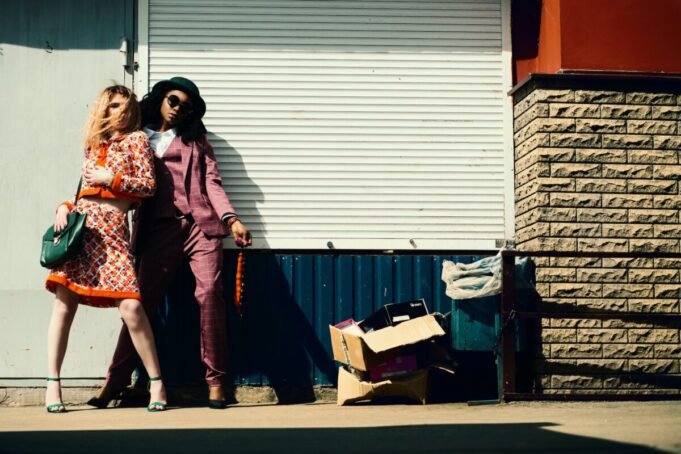In today's environmentally conscious era, the fashion industry has witnessed a surge in brands touting their eco-friendly credentials. However, not all claims are created equal. Greenwashing, the deceptive practice of misleading consumers about a product's environmental benefits, has become prevalent in the fashion realm.
This section aims to shed light on the greenwashing phenomenon, its tactics, and its detrimental impact on consumers and the environment.
Common Greenwashing Tactics in Fashion:
-
Vague and Ambiguous Language: Brands may use broad, undefined terms like "sustainable" or "eco-friendly" without providing concrete evidence to support their claims.
-
Selective Information Disclosure: Brands may highlight a single eco-friendly aspect of their product while downplaying or omitting its overall environmental impact.
-
Misleading Visuals: Brands may use imagery of nature or recycled materials to create an illusion of sustainability, even if the product itself is not environmentally friendly.
-
False Certifications and Eco-Labels: Some brands may use fake or unverifiable certifications and eco-labels to deceive consumers into believing their products are sustainable.
Negative Impact of Greenwashing:
-
Misinformed Consumers: Greenwashing can mislead consumers into making purchasing decisions based on false or exaggerated environmental claims.
-
Wasted Resources: Consumers may unknowingly purchase products that are not truly sustainable, leading to increased waste and environmental degradation.
-
Erosion of Trust: Greenwashing erodes consumer trust in brands and the fashion industry as a whole, making it challenging for genuine sustainable brands to stand out.
Deciphering Eco-Friendly Claims
To combat greenwashing and make informed sustainable fashion choices, consumers must develop a critical eye and scrutinize eco-friendly claims. This section provides a checklist of red flags to identify greenwashing statements and highlights the importance of verifiable certifications and eco-labels.
Red Flags of Greenwashing:
-
Vague and Unsubstantiated Claims: Be wary of claims that lack specific details or supporting evidence.
-
Lack of Transparency: If a brand is not transparent about its sourcing, manufacturing, and disposal practices, it's a red flag.
-
Misleading Comparisons: Brands may compare their products to conventional options, implying that they are more sustainable, even if the difference is marginal.
-
Irrelevant Claims: Watch out for claims that are unrelated to the product's environmental impact, such as "cruelty-free" for a synthetic fabric product.
Importance of Verifiable Certifications and Eco-Labels:
-
Global Organic Textile Standard (GOTS): This certification ensures that textiles are produced using organic fibers and environmentally and socially responsible practices.
-
Fairtrade International: This certification guarantees that products are sourced from farmers and workers who are paid fair wages and work in safe conditions.
-
Bluesign®: This certification verifies that textiles are produced with minimal environmental impact and meet strict safety standards.
-
OEKO-TEX® Standard 100: This certification ensures that textiles are free from harmful substances and safe for human health.
Section 3: Embracing Sustainable Fashion Practices
To combat greenwashing and promote a more sustainable fashion industry, consumers must adopt conscious consumption practices. This involves making informed purchasing decisions, prioritizing quality over quantity, and embracing sustainable fashion practices in their personal wardrobe choices.
Key Sustainable Fashion Practices:
-
Buy Less, Choose Well: Resist impulse purchases and invest in high-quality, durable pieces that will last longer.
-
Prioritize Natural and Sustainable Materials: Opt for clothing made from organic cotton, bamboo, hemp, or recycled materials.
-
Support Local and Ethical Brands: Choose brands that are transparent about their sourcing and manufacturing practices and prioritize fair labor and environmental sustainability.
-
Care for Your Clothes: Follow proper care instructions to extend the lifespan of your garments and reduce the need for frequent replacements.
-
Repurpose and Recycle: Get creative with old clothes by repurposing them into new items or donating them to charity.
Empowering Consumers for Sustainable Fashion Choices
Consumers hold immense power in shaping the fashion industry. By making informed choices, demanding transparency from brands, and advocating for stricter regulations, consumers can drive positive change and create a more sustainable fashion future.
Empowering Consumers:
-
Educate Yourself: Stay informed about greenwashing tactics and sustainable fashion practices to make informed purchasing decisions.
-
Demand Transparency: Ask brands about their sourcing, manufacturing, and disposal practices. Support brands that are transparent and willing to answer your questions.
-
Support Sustainable Brands: Choose brands that are committed to sustainability and ethical practices. Your purchasing power sends a strong message to the industry.
-
Advocate for Change: Contact your local representatives and advocate for stricter regulations and ethical standards in the fashion industry.
-
Collaborate and Collectively Act: Join forces with like-minded consumers and organizations to amplify your voice and drive systemic change.
By embracing sustainable fashion practices, supporting genuine sustainable brands, and advocating for stricter regulations, consumers can play a pivotal role in creating a more sustainable fashion industry. Every conscious choice and collective action contributes to a greener, more ethical, and more sustainable fashion future.




































